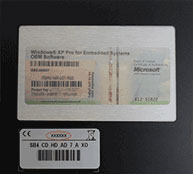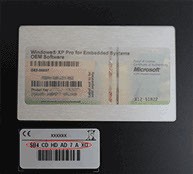Computer touch screens have been with us since the 1960s. Until the recent boom in touch screen mobile phones and tablet computers, most applications were industrial, including bank ATMs and shop tills. The PLATO IV educational touch screen computer was introduced in the 1970s, and PDAs used touch screens in the 1980s and 1990s.
When choosing a touch screen for industrial applications, considerations may include cost, durability, and sensitivity. Today’s industrial touch screens come in several types, including resistive, capacitive, and Surface Acoustic Wave (SAW). These differ in how the user’s input is detected.
A resistive touch screen has two layers of plastic, with a thin gap between. When the screen is touched or pressed, the layers meet. This kind of touch screen is relatively cheap, robust, accurate, and can be operated whilst wearing gloves, making it a popular choice in industry.
Capacitive touch screens use capacitors to detect changes in an electrostatic field caused by proximity of a finger, or other electrical conductor. These screens may not be as accurate or durable as a resistive screen, but support faster movements and multi touch.
The most common types of capacitive touch screen are surface and projected. In a projected capacitive touchscreen, the conductive material forms a grid, for more accurate measurement of touch. Because the electrical field is projected, a PCT screen can be operated from behind a second sheet of glass, making it a more durable option.
In mutual capacitance PCT screens, every part of the screen tracks the input position, whilst in self capacitance, capacitors operate independently. This provides greater accuracy, but multi touch is unsupported.
Wireless technology allows touch screens to be set up in locations where running wires would be awkward. Wired technology is still perceived as more secure and reliable, however
Source:
From touch displays to the Surface: A brief history of touchscreen technology, arstechnica.com


